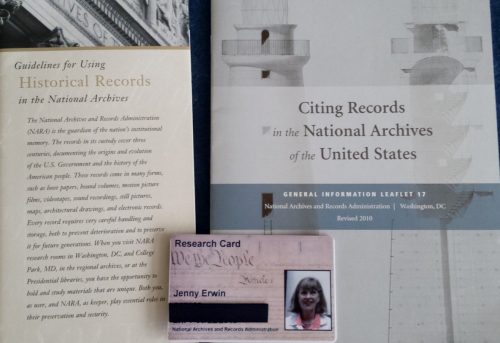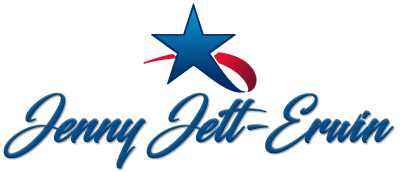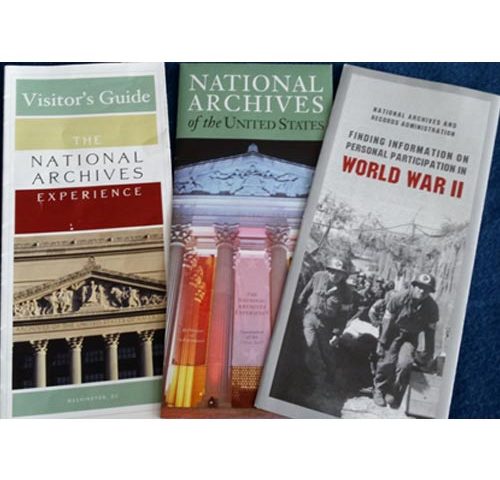My Day at the National Archives

Seeking My Father in San Francisco
July 12, 2017
The Road Not Taken
July 26, 2017You think security is tight at the airport these days? Well, it is even more so at the Archives in Washington, DC, but not because someone is trying to hijack the place. The National Archives and Records Administration is “the guardian of our nation’s institutional memory.” Thus every precaution is taken so that three centuries of irreplaceable materials will remain safe and secure.
How do I know this? A year ago I was in Washington, DC, researching my father’s World War II service and decided to visit the Archives. It was indeed an amazing and rewarding experience in spite of many hurdles. My first challenge was finding the correct entry as the Constitution Avenue entrance did not lead to the research area. The Declaration of Independence, the United States Constitution and the Bill of Rights along with other historic documents are housed in the main building, but there is a separate entrance for researchers. That sacred entrance at 700 Pennsylvania Avenue was where I first encountered the extreme security, and it would take much patience to finally access my family’s’ historic records.
My visit started with the typical airport screening process except I didn’t have to remove my shoes. After I breezed through that, I was given a guest badge and directed to the information room where I signed in, showed my driver’s license and spoke with a helpful assistant. As a first-time visitor, I needed an official research card which also required several additional steps. First I had to review the Archives Orientation PowerPoint, then complete a short application, and again show my driver’s license. My information was quickly entered into their data base, and a small camera took a basic head shot. Finally, I was just minutes away from receiving my personalized card. Upon signing, I became a researcher at the National Archives!
The next security protocol required storing my purse, books and sweater in their designated locker room. But it was comical trying to figure out how to use that specialized locker that cost a quarter. I was only allowed to keep my silenced phone and a piece of plain white paper containing my notes. But eventually these would also have to be checked and approved when I went upstairs to the research room.
Returning to the main information center, I met with a very knowledgeable young woman. She helped me identify files about my Grandfather Jett’s service in the Spanish American War. This was not a planned activity as I came seeking information about my father’s military service. Sadly, those resources were not available at this site, but at Archives II in College Park, Maryland. Without a car and advance preparation, I was not able to go there. If I had done my homework, I would have known that Achives II is the primary repository of World War II records. In a year, I would return and spend two amazing days at College Park. That story I will save for later.
Everyone working in the Archives was exceptionally helpful, kind and friendly, even the guards. They knew the importance of their roles, and only once did I accidently cross the line. I used an ink pen. I had forgotten it was in my pocket and had used it to request a file. Oops, they firmly reminded me that only pencils were allowed so I quickly tucked that pen away. I never made that mistake again!
With help from the knowledgeable staff, I found something I didn’t even know existed, my grandfather’s enlistment papers. I was eager to see what was in that folder, but would have to wait another day to view the contents. After completing the request form, I handed it to a staffer but it was too late to retrieve the files. There are only certain designated “pull times,” and I had missed the last one. Fortunately, it would be retrieved the next morning and ready when I returned.
Disappointed, but hopeful about my return visit, I prepared to leave. Gathering all my personal belongings, I began my exit from the Archives. I swiped my card, signed out and then headed to the main entrance to pass through another security screening. After turning in my guest badge and getting my purse examined, I walked out of that massive structure into the bustling afternoon DC traffic. I was pleased about my initial experiences but very curious to see what the next day there would bring.
It was much easier the next morning returning to the building and heading immediately to the research floor. But I encountered additional security there too as another guard reviewed my credentials upon entering the research room. Finally inside, I approached the main desk and retrieved a folder with the information about my grandfather. Slowly and carefully I opened it to discover the yellowed originals of Hiram Jett’s enlistment papers in the 3rd Volunteer Regiment; Company D dated July 23, 1898. My shaking hands held solid evidence that he had served in the Spanish American War. I also learned that he was twenty-eight when he enlisted and that he had been a teacher for the past nine years.
The next document held an unexpected revelation. Dated October 22, 1898, it was a flawlessly penned letter, written in the flowery cursive style of that period and addressed to the Adjunct General. Only three months into his two- year commitment, Hiram was requesting a medical discharge for a serious injury he had recently sustained. The final document in that file was his Certificate of Honorable Discharge.
It is hard to describe my feelings as I held the 108-year-old documents. I was only eleven when my grandfather died so his early life was neither known nor relevant to me. Yet I was holding in my hands an important part of his past, symbolizing his patriotism and love for this country. As I traced each word of his letter, I imagined him thoughtfully composing his request and regretting that he had not been able to serve. Yet I was so full of pride for this bright young man. Nine years later he had a son, my father Roland Jett, who fulfilled the family tradition by honorably serving in the Pacific Theater for over thirty months.
In amazement, I returned my grandfather’s historic papers to the main desk, made copies on the required blue paper, and prepared to leave. Yet one final security procedure remained. Those blue copies were put in a large green canvas bag which was zipped closed and securely locked by the guard. The bag was then handed to me as I left the research room and made my way to the exit. This time, a serious-looking guard took my badge and the green bag. He checked the contents of my purse and finally unlocked the canvas bag. Handing me the contents, he smiled and wished me a good day.
Indeed, it was a very good day and one I’ll remember for a long time. I had discovered surprising facts about my grandfather, and I had gained a new appreciation for the National Archives and Records Administration. I finally understood the need for their extreme security. To those kind and knowledgeable strangers at the National Archives, thank you for safe-guarding and preserving our past, present and future.
For more information about conducting research at the National Archives go to www.archives.gov.


